第2章 ON SOME TECHNICAL ELEMENTS OF STYLE IN LITERATURE(
Music and literature, the two temporal arts, contrive their pattern of sounds in time; or, in other words, of sounds and pauses.Communication may be made in broken words, the business of life be carried on with substantives alone; but that is not what we call literature; and the true business of the literary artist is to plait or weave his meaning, involving it around itself; so that each sentence, by successive phrases, shall first come into a kind of knot, and then, after a moment of suspended meaning, solve and clear itself.In every properly constructed sentence there should be observed this knot or hitch; so that (however delicately)we are led to foresee, to expect, and then to welcome the successive phrases.The pleasure may be heightened by an element of surprise, as, very grossly, in the common figure of the antithesis, or, with much greater subtlety, where an antithesis is first suggested and then deftly evaded.Each phrase, besides, is to be comely in itself; and between the implication and the evolution of the sentence there should be a satisfying equipoise of sound; for nothing more often disappoints the ear than a sentence solemnly and sonorously prepared, and hastily and weakly finished.Nor should the balance be too striking and exact, for the one rule is to be infinitely various; to interest, to disappoint, to surprise, and yet still to gratify; to be ever changing, as it were, the stitch, and yet still to give the effect of an ingenious neatness.
The conjurer juggles with two oranges, and our pleasure in beholding him springs from this, that neither is for an instant overlooked or sacrificed.So with the writer.His pattern, which is to please the supersensual ear, is yet addressed, throughout and first of all, to the demands of logic.Whatever be the obscurities, whatever the intricacies of the argument, the neatness of the fabric must not suffer, or the artist has been proved unequal to his design.And, on the other hand, no form of words must be selected, no knot must be tied among the phrases, unless knot and word be precisely what is wanted to forward and illuminate the argument; for to fail in this is to swindle in the game.The genius of prose rejects the CHEVILLE no less emphatically than the laws of verse; and the CHEVILLE, I should perhaps explain to some of my readers, is any meaningless or very watered phrase employed to strike a balance in the sound.
Pattern and argument live in each other; and it is by the brevity, clearness, charm, or emphasis of the second, that we judge the strength and fitness of the first.
Style is synthetic; and the artist, seeking, so to speak, a peg to plait about, takes up at once two or more elements or two or more views of the subject in hand; combines, implicates, and contrasts them; and while, in one sense, he was merely seeking an occasion for the necessary knot, he will be found, in the other, to have greatly enriched the meaning, or to have transacted the work of two sentences in the space of one.In the change from the successive shallow statements of the old chronicler to the dense and luminous flow of highly synthetic narrative, there is implied a vast amount of both philosophy and wit.The philosophy we clearly see, recognising in the synthetic writer a far more deep and stimulating view of life, and a far keener sense of the generation and affinity of events.The wit we might imagine to be lost; but it is not so, for it is just that wit, these perpetual nice contrivances, these difficulties overcome, this double purpose attained, these two oranges kept simultaneously dancing in the air, that, consciously or not, afford the reader his delight.Nay, and this wit, so little recognised, is the necessary organ of that philosophy which we so much admire.That style is therefore the most perfect, not, as fools say, which is the most natural, for the most natural is the disjointed babble of the chronicler; but which attains the highest degree of elegant and pregnant implication unobtrusively; or if obtrusively, then with the greatest gain to sense and vigour.Even the derangement of the phrases from their (so-called) natural order is luminous for the mind; and it is by the means of such designed reversal that the elements of a judgment may be most pertinently marshalled, or the stages of a complicated action most perspicuously bound into one.
The web, then, or the pattern: a web at once sensuous and logical, an elegant and pregnant texture: that is style, that is the foundation of the art of literature.Books indeed continue to be read, for the interest of the fact or fable, in which this quality is poorly represented, but still it will be there.And, on the other hand, how many do we continue to peruse and reperuse with pleasure whose only merit is the elegance of texture? I am tempted to mention Cicero; and since Mr.Anthony Trollope is dead, I will.It is a poor diet for the mind, a very colourless and toothless 'criticism of life'; but we enjoy the pleasure of a most intricate and dexterous pattern, every stitch a model at once of elegance and of good sense; and the two oranges, even if one of them be rotten, kept dancing with inimitable grace.
Up to this moment I have had my eye mainly upon prose; for though in verse also the implication of the logical texture is a crowning beauty, yet in verse it may be dispensed with.